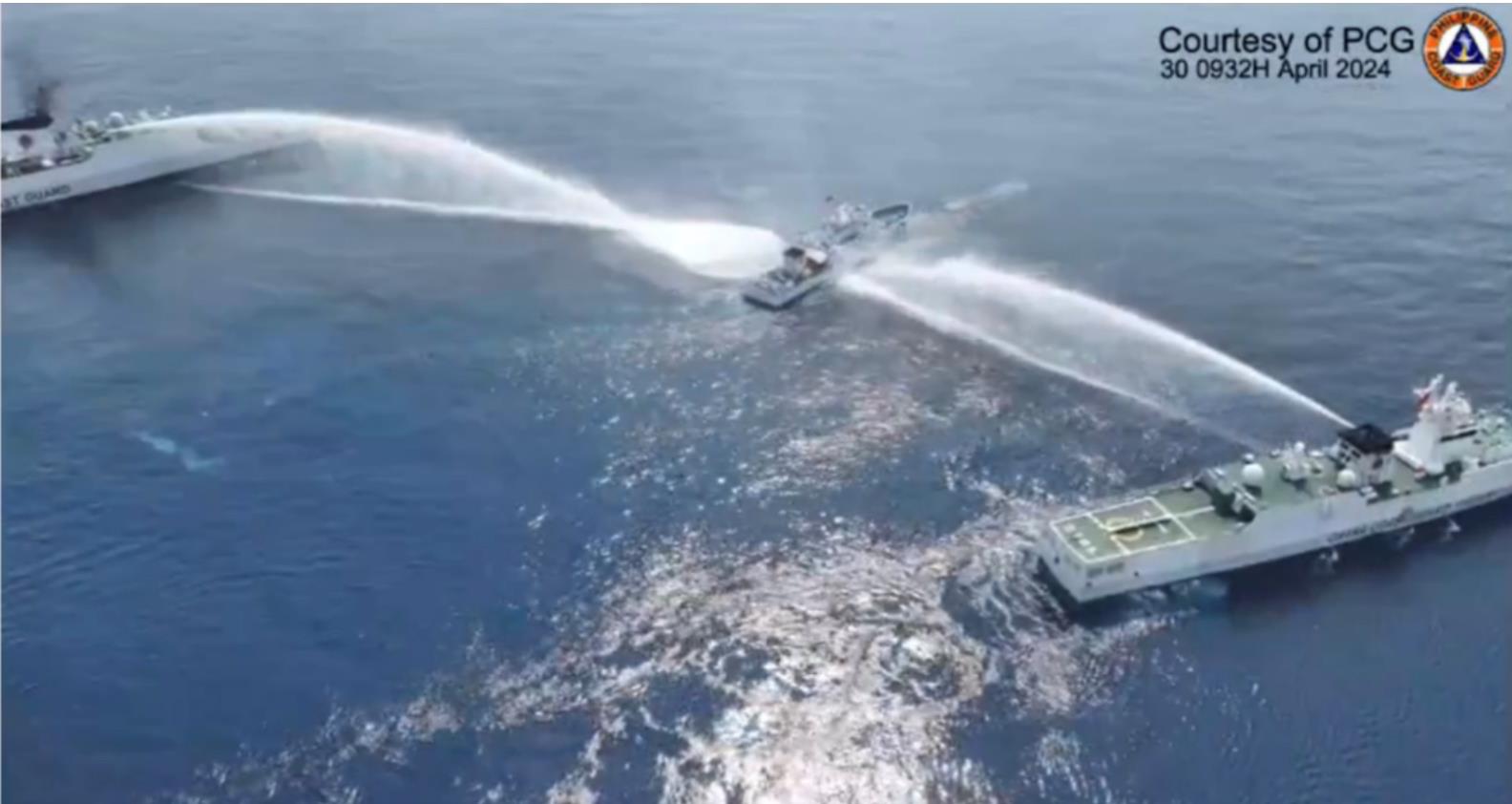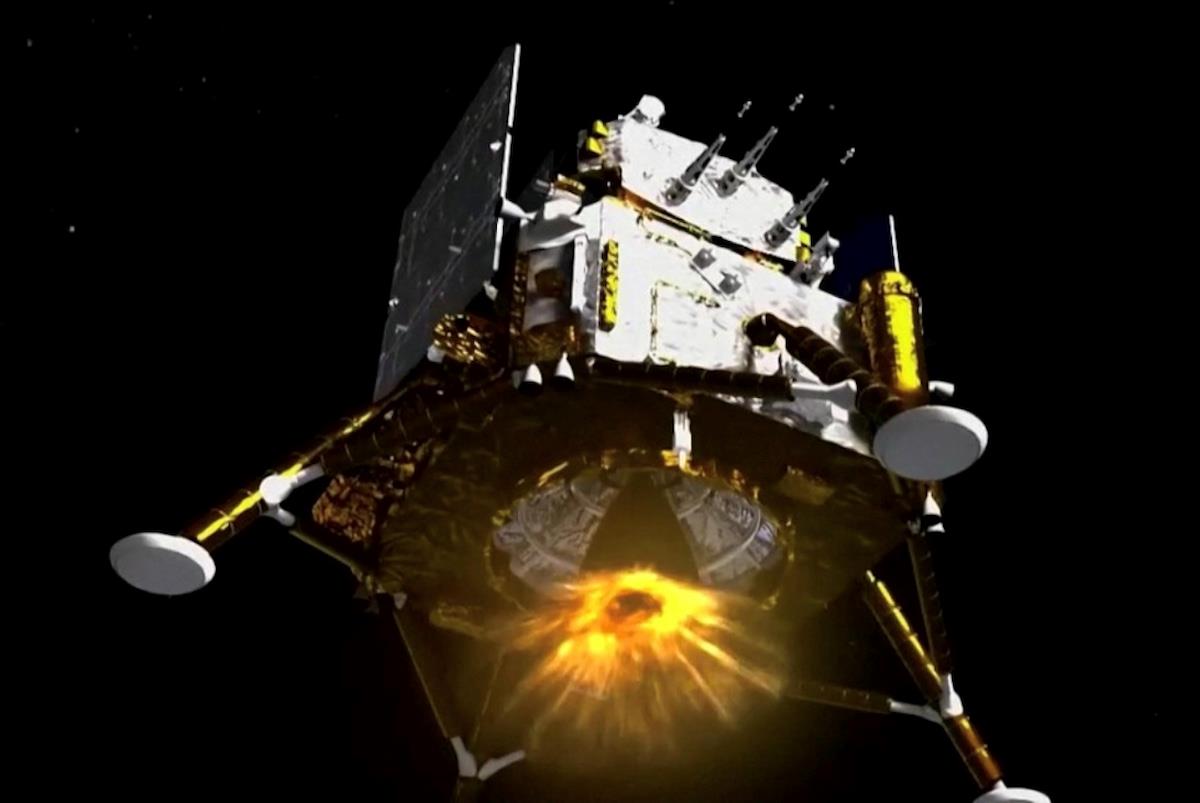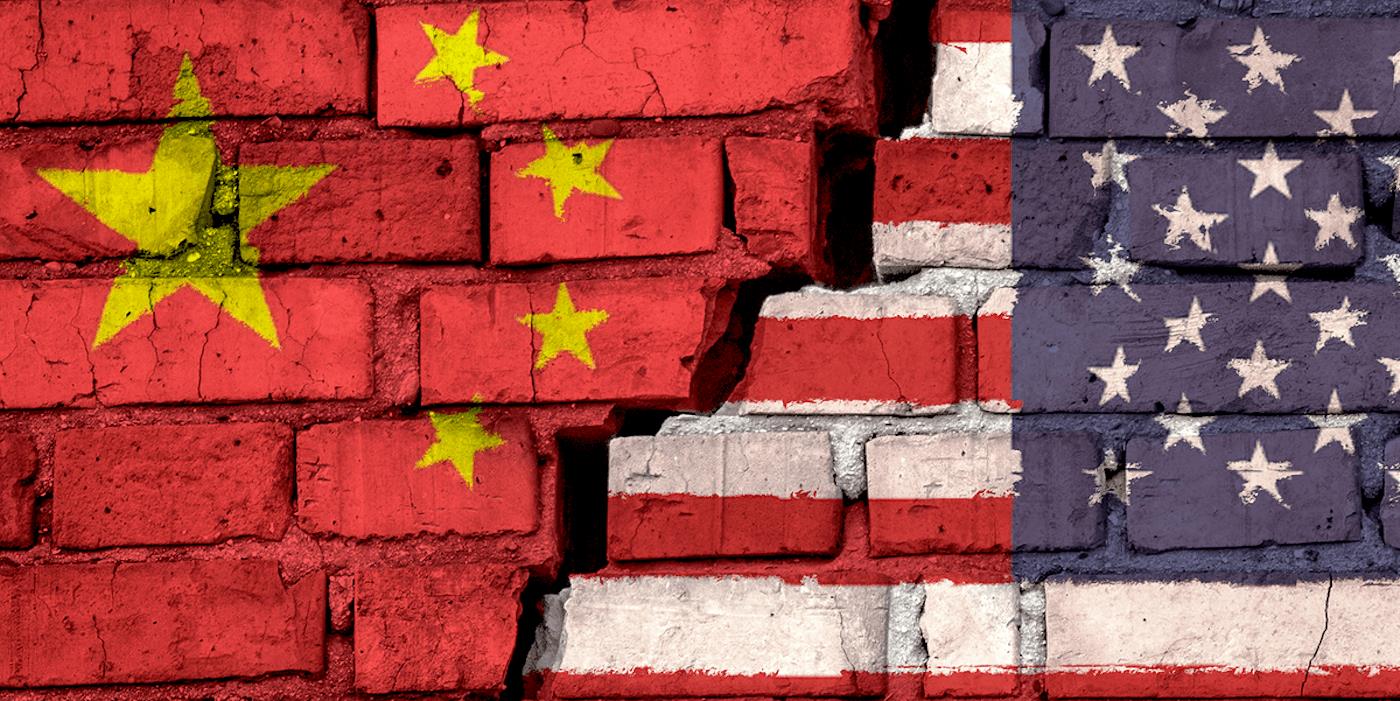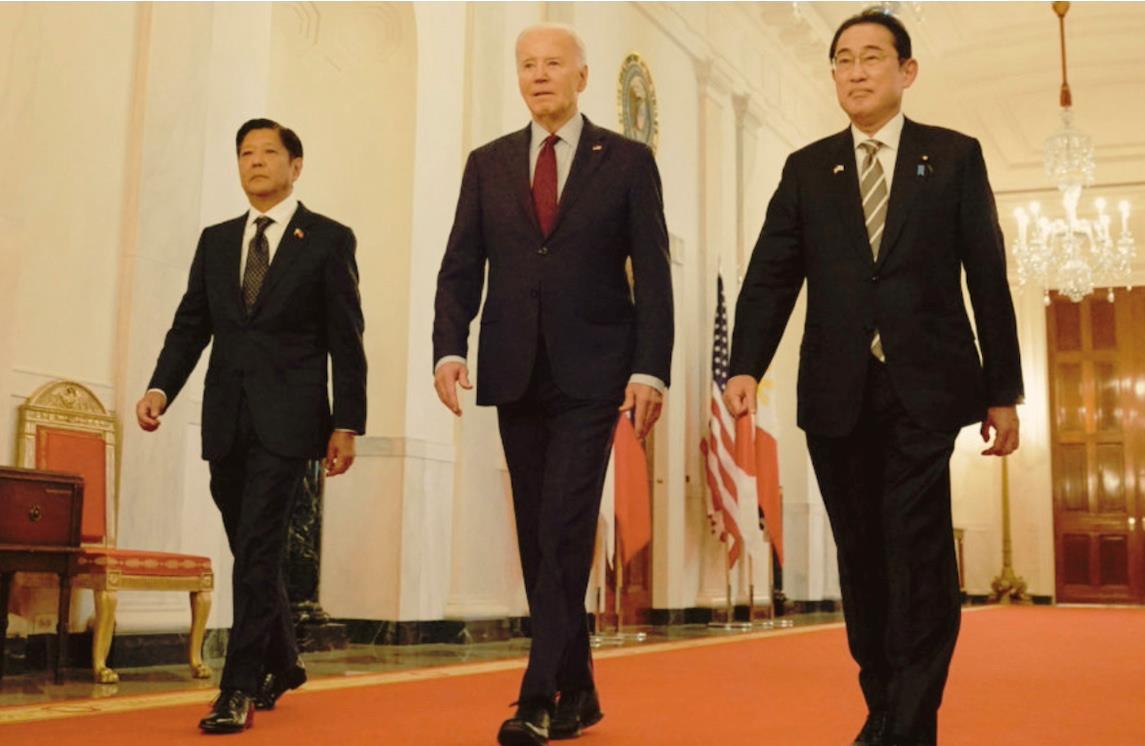
When Will US Come To The Philippines Defense?
On April 30, China Coast Guard (CCG) vessels used water cannons against two Philippine vessels conducting patrols close to the contested Scarborough Shoal, a sea feature both sides claim.
The Chinese vessels targeted the Philippine Coast Guard's (PCG) BRP Bagacay and Bureau of Fisheries and Aquatic Resources (BFAR) vessel BRP Datu Bankaw, both of which sustained damage, according to Philippine authorities.
“This damage serves as evidence of the forceful water pressure used by the China Coast Guard in their harassment of the Philippine vessels,” Commodore Jay Tarriela, spokesperson for the National Task Force for the West Philippine Sea (NTF-WPS), said in a statement.
To be sure, China has yet to employ armed force to impose its will on the Philippines. And it has yet to reclaim the hotly-disputed Scarborough Shoal, which has been under Beijing's de facto control following a months-long standoff in 2012.

Chinese cutters CCG-3105 and CCG-5303 deploy water cannons on BRP Bagacay (MRRV-4410) near Scarborough Shoal on April 30, 2024. Photo: Philippine Coast Guard
But the Philippines is being pushed to the edge as China continues to injure its maritime personnel and damage its vessels. This week's attack came just weeks after another incident at the Second Thomas Shoal that injured several Filipino servicemen.
Significantly, the Scarborough Shoal incident coincided with major Balikatan wargames between the Philippines and key allies, most notably the United States, which deployed 11,000 troops and state-of-the-art weapons systems and simulated amphibious attacks on islands.
Pressure is growing on the US to respond to China's aggression. The Joe Biden administration has repeatedly warned Beijing of its obligation to come to Manila's rescue in the event of a conflict.
But it has yet to provide plausible deterrence against China's increasingly aggressive“gray zone” tactics in the disputed waters.

What China seeks on the far side of the moon

Russia riding US right out of West Africa

On contradiction between the US and China Frozen conflict
Shortly before the latest round of tensions, China publicly claimed that it had reached an interim agreement with the Philippines to avoid dangerous escalation over the Second Thomas Shoal.
A spokesman for China's embassy in Manila claimed that an understanding had been reached over a“new model” to manage disputes over the disputed shoal, which hosts a de facto Philippine base on the grounded BRP Sierra Madre warship.
But Philippine authorities quickly dismissed the claim, insisting on their uncompromising position over the Second Thomas Shoal, a low-tide elevation located well within the Southeast Asian nation's 200-nautical miles exclusive economic zone (EEZ).
The Philippine National Security Council (NSC) lambasted China's claim as“nothing more than a new invention,” referring to an earlier alleged“gentleman's agreement” between China and the former Duterte administration that is now under formal investigation.
“As the President [Ferdinand Marcos Jr.] has clearly stated, there is
no agreement whatsoever about [Second Thomas] Shoal
and that we shall continue to do all activities within the bounds of international law and we shall brook no interference in our lawful actions,” a statement by the NSC said.
“Moreover, the Philippines will never agree to any 'internal understanding' or 'new model' that can be deemed as acquiescence or recognition of China's control and administration over the Ayungin Shoal as China's territory...As [Second Thomas] Shoal is a part of the exclusive economic zone of the Philippines, we cannot agree to any such understanding that violates the Philippine constitution or international law,” it added.
For his part, Philippine Defense Secretary Gilberto Teodoro also said that he was“not aware of, nor is it a party to, any internal agreement with China”, reflecting the growing strains in bilateral relations.
While rising tensions over the Second Thomas Shoal are a relatively new phenomenon that have turned particularly violent in the past six months, the spat over the Scarborough Shoal is more of a frozen conflict.
Following a months-long naval standoff with a Philippine warship, China managed to exercise de facto administrative control over the fisheries-rich and militarily strategic shoal in 2012. The US came under criticism at the time for not intervening in the crisis.
Over the past decade, all Filipino presidents, including the pro-Beijing Rodrigo Duterte , have warned China against reclaiming and establishing military facilities over the shoal, which lies just over 100 nautical miles from Philippine shores and vital military facilities in the Subic Bay.
In 2016, an arbitral tribunal, formed under the aegis of the United Nations Convention on the Law of the Sea (UNCLOS), censured China's occupation of the Scarborough Shoal, which was ruled as a 'common fishing ground' for littoral states, including the Philippines and Vietnam.
In line with its mutual defense treaty with the Philippines, the US has also repeatedly warned China against any drastic move on the shoal.
Pressure on BidenSince last year, key Western powers have publicly stood by the Southeast Asian nation in hopes of dissuading China from more aggressive tactics in the disputed waters.
Against the backdrop of rising tensions over the Second Thomas Shoal, which has seen three major incidents causing injuries to Philippine troops in the past six months, Biden publicly criticized China's“dangerous maneuvers” and reiterated his country's“ironclad” commitment to the Philippines last October.

Sign up for one of our free newsletters
- The Daily ReportStart your day right with Asia Times' top stories AT Weekly ReportA weekly roundup of Asia Times' most-read stories
But China has continued to impose its will in the disputed waters, culminating in an even more violent incident in March . Weeks later, the US president, during an unprecedented trilateral summit with President Marcos Jr and Japanese Prime Minister Fumio Kishida publicly warned China of a decisive response should the maritime spats escalate into armed confrontation.

Philippine President Ferdinand Marcos Jr, US President Joe Biden and Japanese Prime Minister Fumio Kishida walk in stride. Image: X Screengrab
“I want to be clear: the United States defense commitments to Japan and to the Philippines are ironclad, they are ironclad. As I said before, any attack on Philippine aircraft, vessels, or armed forces in the South China Sea will invoke our Mutual Defense Treaty,” Biden declared,
Growing security assistance from the US and other like-minded Indo-Pacific powers has emboldened the Philippines to more proactively defend its sovereign rights in the South China Sea.
By all indications, the Marcos Jr administration is determined to push back against the Asian superpower over multiple disputed features, most notably the Second Thomas Shoal.
For its part, China has remained undaunted, leveraging its massive coast guard fleet and armada of militia forces to disrupt Philippine patrols and resupply missions with growing aggressiveness.
As a result, all three protagonists are scrambling for new ways to protect their interests while avoiding a possible all-out conflict that would send shockwaves regionwide.
Follow Richard Javad Heydarian on X at @Richeydarian
Thank you for registering!
An account was already registered with this email. Please check your inbox for an authentication link.

Legal Disclaimer:
MENAFN provides the
information “as is” without warranty of any kind. We do not accept
any responsibility or liability for the accuracy, content, images,
videos, licenses, completeness, legality, or reliability of the information
contained in this article. If you have any complaints or copyright
issues related to this article, kindly contact the provider above.


















Comments
No comment